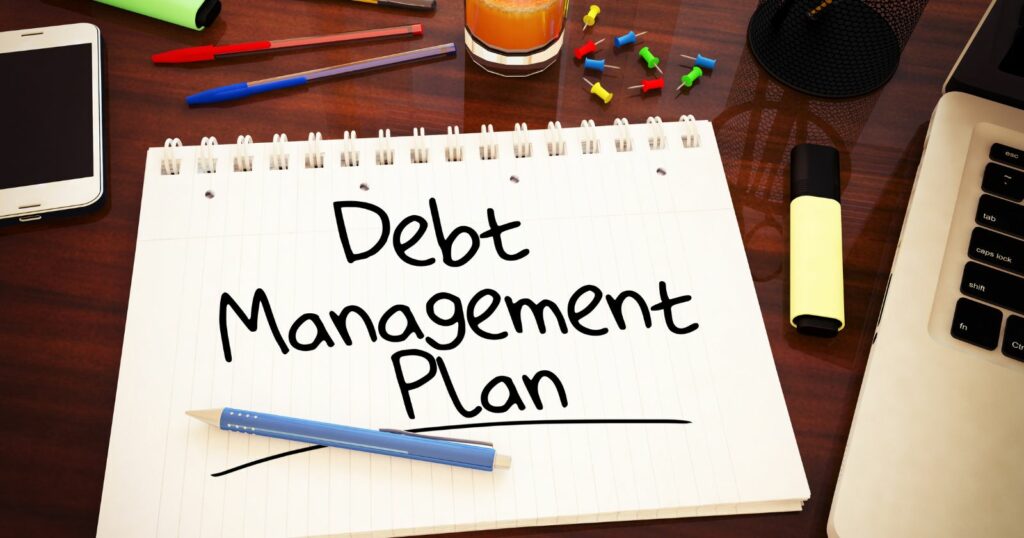
How To Consolidate Credit Card Debt? Different Methods
Consolidating credit card debt can be a lifeline for those drowning in multiple high-interest debts. It’s not just about simplifying payments; it’s about crafting a strategy to regain financial control. In this guide, we’ll explore the various methods of credit card debt consolidation, weighing their pros and cons, and providing actionable steps to help you choose and implement the right strategy for your financial situation.
Understanding Credit Card Debt Consolidation

What is Credit Card Debt Consolidation?
Credit card debt consolidation is a strategic financial move where you merge several credit card balances into one manageable account. This approach often results in lower interest rates and smaller monthly payments, making it easier to manage your finances. By consolidating your debts, you simplify your monthly bills, potentially reduce the amount of interest you pay, and set a clearer, more direct course towards eliminating debt. It’s a practical step towards financial stability for those juggling multiple high-interest credit card debts.
Why Consolidate?
- Simplified Payments: Juggling multiple payments can be overwhelming. Consolidation brings them into one.
- Lower Interest Rates: Potentially reduce the overall interest paid on your debts.
- Financial Clarity: A clear timeline for debt repayment.

Methods of Consolidation
1. Balance Transfer Credit Cards
Pros:
- Often come with low or 0% introductory APR, which can significantly reduce interest costs.
- Simplify debts into one payment, making it easier to manage and track your debt repayment progress.
Cons:
- Balance transfer fees, which are typically a percentage of the transferred amount, can add to the overall cost.
- The low APR is usually for a limited time, after which the rate increases, potentially leading to higher interest costs if the balance is not paid off in time.
- Requires a good credit score to qualify for the best offers, potentially limiting accessibility for some individuals.
- Risk of accumulating more debt if the newly freed-up credit lines are used irresponsibly.

2. Debt Consolidation Loans
Pros:
- Fixed interest rates provide stability and predictability in repayment plans.
- Predictable monthly payments make budgeting easier and help in financial planning.
- Can potentially lower the overall interest rate compared to high-interest credit cards.
- Helps in paying off debt faster if the loan term is shorter than the combined terms of consolidated debts.
Cons:
- Requires a good credit score for the best rates, which might exclude some borrowers.
- Potential origination fees and other charges can add to the cost of the loan.
- Extending the loan term can lead to more interest paid over time, even if monthly payments are lower.
- Consolidating does not necessarily address the underlying spending habits that led to debt accumulation.
3. Debt Management Plans
Pros:
- Help from financial professionals offers guidance and support in managing debt.
- Potentially lower interest rates negotiated by credit counselors can reduce overall debt burden.
- Can simplify payments by consolidating multiple debts into one monthly payment.
- May help in avoiding bankruptcy and its negative impact on credit scores.
Cons:
- Monthly fees for the service can add to the overall cost.
- Could take longer to pay off debt, depending on the terms of the plan.
- May require closing credit accounts, which can impact credit utilization and credit score.
- Limited to unsecured debts like credit cards; does not typically include secured debts like mortgages or auto loans.

Choosing the Right Method
- Assess Your Financial Situation: Look at your total debt, interest rates, and monthly income.
- Compare Interest Rates and Fees: Ensure the consolidation method actually saves you money.
- Consider Your Credit Score: Some options require a good credit score.
- Think Long-Term: Choose a plan that aligns with your financial goals.
Implementing Your Chosen Method
- Balance Transfer: Apply for a balance transfer card and transfer debts as per the card’s terms.
- Consolidation Loan: Shop around for loans, compare offers, and apply.
- Debt Management Plan: Contact a credit counseling agency and enroll in their plan.

Risks and Pitfalls
- Credit Score Impact: Some methods can temporarily lower your score.
- Falling into Further Debt: Avoid accumulating more debt during the consolidation process.
- Read the Fine Print: Be aware of all terms and conditions.
Negotiating with Creditors and Seeking Help
- Negotiation: Contact creditors to negotiate terms. Be honest about your financial situation.
- Professional Help: Consider consulting a financial advisor or credit counselor.

Real-Life Success Stories
- Case Study 1: Lincoln consolidated $15,000 in credit card debt through a balance transfer card, paying off his debt during the 0% APR period.
- Case Study 2: Charity used a debt consolidation loan to combine her debts, reducing her monthly payments and interest rate.
Interesting Facts About Credit Card Debt Consolidation
| Fact | Description |
|---|---|
| Average Debt Consolidation Loan Rate | Typically ranges from 6% to 20% |
| Average Credit Card APR | Around 16% to 24% |
| Potential Savings | Consolidation can save thousands in interest |
| Success Rate | High success rate when followed with a budget plan |

Navigating Towards Financial Freedom (H2)
Credit card debt consolidation is more than a fiscal maneuver; it’s a pivotal step towards financial autonomy. By judiciously selecting a consolidation method that resonates with your financial situation, you’re not just streamlining your debts but embarking on a transformative journey to financial liberation. This process is about fostering financial discipline, a skill that extends far beyond the realm of debt repayment. Embrace this path, as each stride forward is a move closer to a stable and prosperous financial future.
